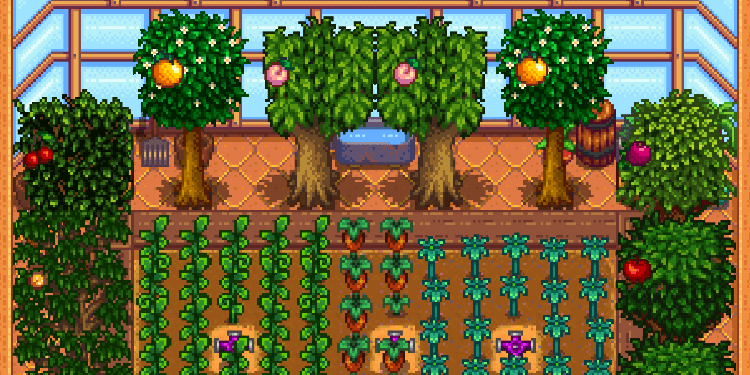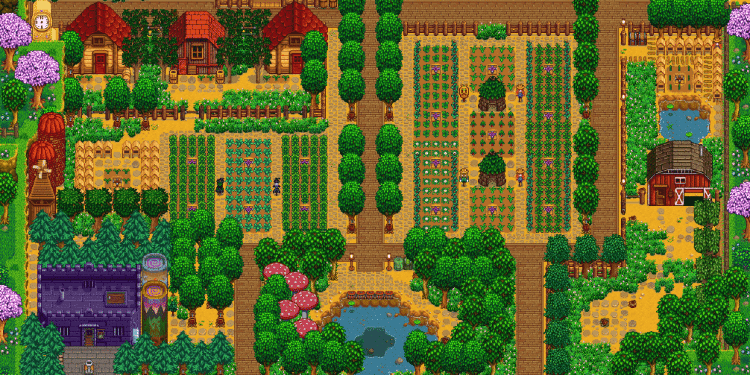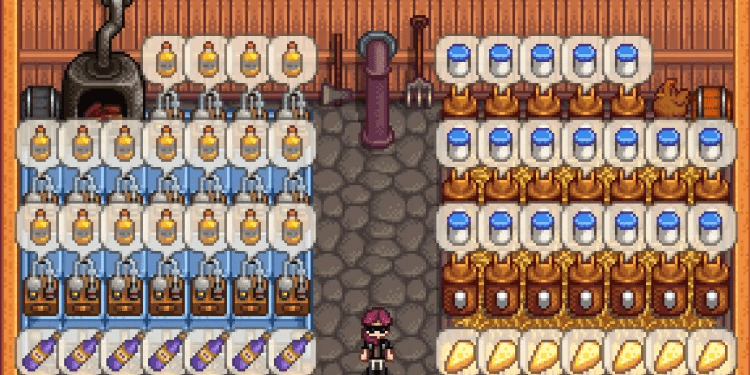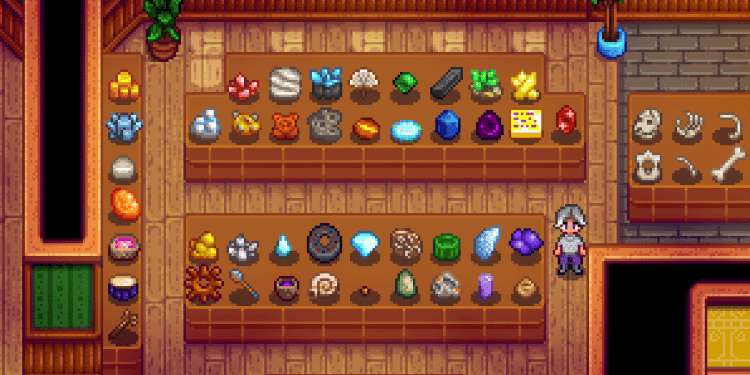Best Ways to Make Money in Stardew Valley
06-01-2024
Eric Barone's charming farming game Stardew Valley invites players to escape the hustle and bustle of modern life and settle into the tranquil rhythms of a small-town agricultural lifestyle. Though not solely focused on amassing wealth, players quickly discover that achieving their goals on the farm requires a steady influx of cash. This virtual currency is necessary for everything from upgrading buildings and tools to buying seeds and crafting ingredients. Fortunately, Stardew Valley offers a variety of methods to accumulate wealth quickly and efficiently.
Passive Income with Crab Pots
One low-maintenance way to earn money in Stardew Valley is through the use of Crab Pots. These allow players to catch fish and obtain items with minimal effort — simply bait the pots, place them, and then return later to collect the day's catch. In addition to fish, Crab Pots will occasionally catch trash that can be recycled into useful materials with the recycling machine.
The Core of Stardew Valley: Seasonal Farming
Farming is at the heart of Stardew Valley's gameplay, with each season offering unique opportunities to plant and harvest crops for profit. Smart crop selection and efficient farming practices can greatly accelerate a player's financial success, particularly in the crucial first year of gameplay. Here's a breakdown of the most lucrative crops to plant each season:

Bountiful Harvests in Each Season
- Spring: Focus on strawberries, cauliflower, and potatoes. While strawberries aren't immediately profitable due to the timing of their availability, they become a major income source by the second year. Meanwhile, growing cauliflower and potatoes offer a solid return, especially when there are specific requests for them at Pierre's General Store.
- Summer: Blueberries, melons, and hops reign supreme in the hotter months. Hops can be turned into Pale Ale, yielding high returns, while melons are often requested by town residents for a healthy reward. Blueberries, while less immediately lucrative, can be processed into wine for long-term profits.
- Fall: Pumpkins are a valuable crop, and Pierre offers handsome rewards for them. Starfruit and cranberries also offer significant earning potential, especially when used in artisanal goods like wine.
Year-Round Farming in the Greenhouse
Securing the Greenhouse is a challenge, but it pays off by allowing year-round cultivation of crops, regardless of the season. Skilled players can take advantage of this by growing profitable crops like Starfruit and Ancient Fruit continuously, significantly boosting their income.

The Lucrative Path of the Fisher
Fishing in Stardew Valley is a readily accessible and rewarding activity. Willy provides players with their first fishing rod at no cost, enabling them to start earning money by catching fish without any initial investment. Fishing can also be a valuable way to earn money during winter when traditional farming yields are low.
Supplement Your Earnings with Foraging
As players explore the game world and meet the residents of Pelican Town, they can gather various forageable items in each season to sell for extra income. This can be particularly fruitful in spring, with an abundance of Spring Onions available in the area south of Marnie's ranch.
Capitalizing on Mixed Seeds for Budget Farming
In the world of Stardew Valley, players often find themselves with an abundance of Mixed Seeds after tidying up their farms and the surrounding areas, such as the forests near Marnie's ranch and the Wizard's abode. These versatile seeds, which flourish into assorted seasonal foraged goods, come at no cost. They serve as an economical way to populate your fields without draining your funds on seeds from commercial outlets. While they might not turn a massive profit, Mixed Seeds are practical in the early stages of the game, offering a modest financial boost to support more lucrative endeavors and aiding in the completion of Community Center Bundles.

The Lucrative Practice of Tree Tapping
Reaching Level 3 in the art of Foraging unlocks the Tapper, a proficient tool for resource extraction from trees. By fixing a Tapper onto maple, oak, and pine trees, a farmer can regularly harvest Maple Syrup, Oak Resin, and Pine Tar, respectively. A small investment in Wood and Copper Ore is all it takes to create this income stream. Establishing a grove and densely populating it with Tappers can significantly enhance earnings, especially from Maple Syrup, which is the most profitable of the tree products. Beyond selling, these resources also feed into other profitable activities within the game.
Everlasting Harvests: Reaping Continuous Rewards
Stardew Valley's agricultural system highlights a select group of plants each season that are notably lucrative but come with a hefty price tag. Yet, it's often the more unassuming crops that establish a solid foundation for wealth. Several crops, once grown, continue to yield produce throughout their respective seasons, such as Strawberries and Green Beans in the spring and Blueberries, Tomatoes, and Corn in the summer. With these plants, the ongoing expenses of seeds are minimized, and farmers can devote less time to planting and more to diversifying their income sources.
Turning Basic Products into Artisanal Goldmines
While raw crops and animal products are straightforward sales options, transforming them into artisan goods significantly increases their value. Items such as mayonnaise and wine are just the tip of the iceberg in the wide-ranging category of artisan goods, which consistently fetch higher prices than their initial ingredients. From mead surpassing honey to cloth outvaluing wool, these goods require an initial setup but soon become a top method to amass wealth.

Unleashing Egg-cellent Earnings with Chickens
Chickens are the most accessible and easiest to tend livestock in Stardew Valley, making them an ideal choice for new farmers. With a modest investment in a Coop and the purchase of chickens from Marnie, players can start an egg production line. Initially, chickens lay small eggs, but as they become acclimated, they graduate to producing larger, more valuable eggs. Using Mayonnaise Machines further increases profitability, converting eggs into a creamy condiment more valuable than the eggs themselves, solidifying chickens as a reliable source of fast cash in Stardew Valley.
Maximize Returns with Gems and Crystalariums
In the pixelated realm of Stardew Valley, gems like Diamonds stand out as some of the most sought-after commodities, fetching a neat sum of 750g for each stone. While uncovering them in subterranean adventures is one way to profit, employing Crystalariums can significantly boost income. These devices can duplicate any gemstone placed within, offering a renewable source of wealth. Invest in multiple Crystalariums, and watch your profits multiply. Although unlocking them may require dedication to mining, they serve as a swift avenue to prosperity for miners in the valley.

Boosting Basic Crop Value with Preserve Jars
With the correct use of Preserve Jars, you can elevate the market value of simple crops to new heights. These containers allow you to transform fruits into jams and vegetables into pickles, significantly increasing their selling prices. Foraging for the necessary Wood, Coal, and Stone to craft these jars is a small effort for the reward they provide. Although higher-valued crops may be more suitable for fermentation in Kegs, low-cost, high-yield crops find their true potential in Preserve Jars, offering farmers a delightful return on investment.
Aquaculture Advantages of Fish Ponds
Constructing Fish Ponds is a strategic economic move attainable early in your Stardew Valley journey. These aquatic homes can host various fish breeds, with species like Sturgeons, Rainbow Trout, and Lava Eels bringing in a more substantial income. Besides their direct value, Sturgeon Ponds can yield Roe, which can be transformed into luxurious Caviar, while Rainbow Trout occasionally surprises with coveted Prismatic Shards, and Lava Eels can contribute to your Gold Ore reserves. Moreover, converting fish eggs into aged rice using preserve jars can further enhance their worth, marking fishponds as a valuable asset to any enterprising farmer.

Aging to Perfection: Profits from Casked Wine and Cheese
Two standout products in the Stardew Valley market are Wine and Cheese. Initiating their value journey in Kegs, their worth can reach even greater heights when aged in Casks. The aging process can amplify these delightful goods to Iridium quality, reaching a selling price six times higher than the base. When it comes to peak profitability, Starfruit Wine shines as the most valuable item derived from a single piece of produce. Although getting there takes substantial time and effort, the financial boon they provide will more than makeup for the initial investment, offering a bountiful income even during the barren winter months.
Sweet Success with Honey Production
Once a farmer achieves Farming Level 3, the blueprint for constructing Bee Houses becomes available, marking a quick progression for attentive crop tenders. Crafting your inaugural Bee House requires nothing more than some basic materials: Wood, Coal, Iron Bar, and Maple Syrup. Position your Bee Houses strategically around the farm, and they'll consistently churn out jars of Honey, with each harvest deliverable every four days during every season except winter. Honey, especially when paired with Fairy Roses, can substantially increase its value, turning it into one of the swiftest streams of income in Stardew Valley's first year, sweetening the deal for any industrious farmer.
By employing these strategies, players can ensure their Stardew Valley farm flourishes financially, turning a peaceful life in nature into a prosperous endeavor. Whether it's through meticulous crop planning, fishing, or foraging, the paths to wealth in the valley are as plentiful as they are enjoyable.












Leave a comment
Your comment is awaiting moderation. We save your draft here
0 Comments